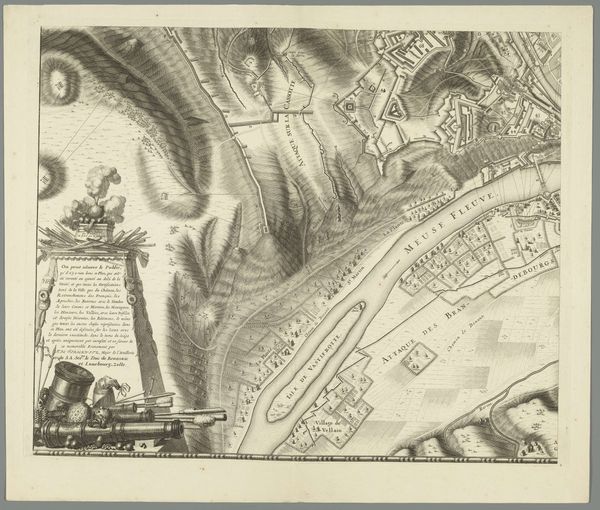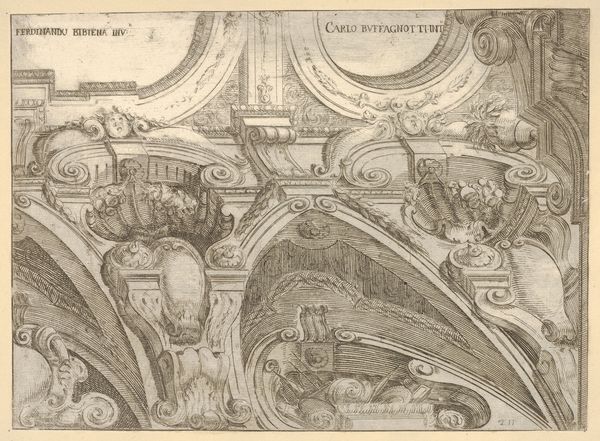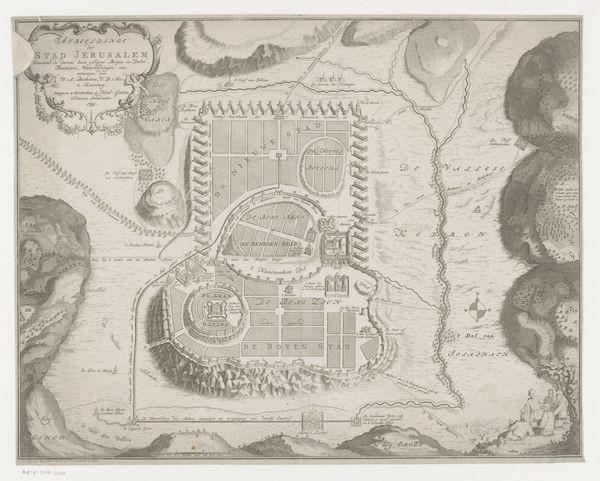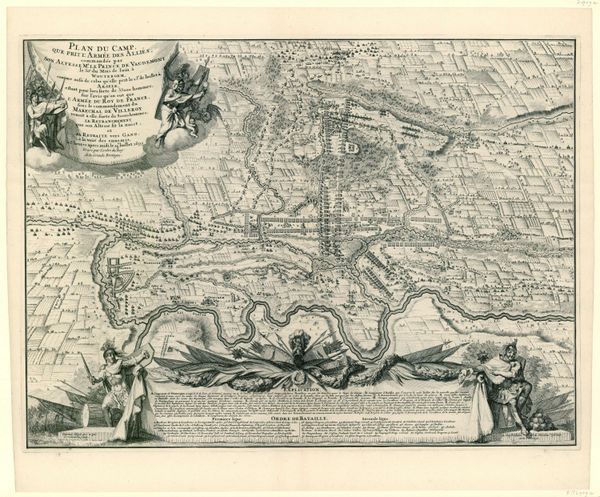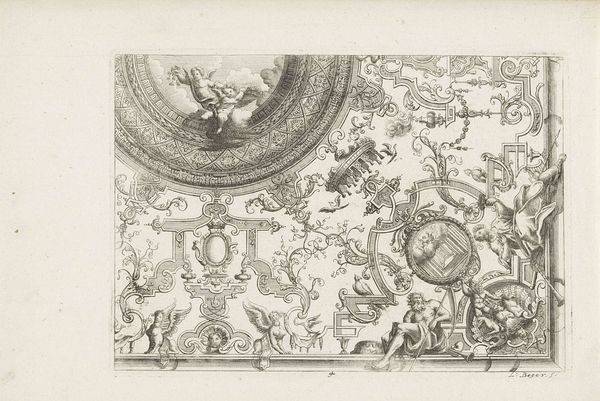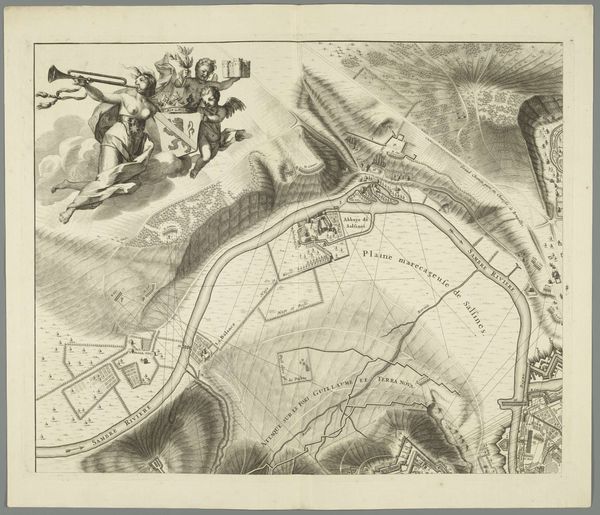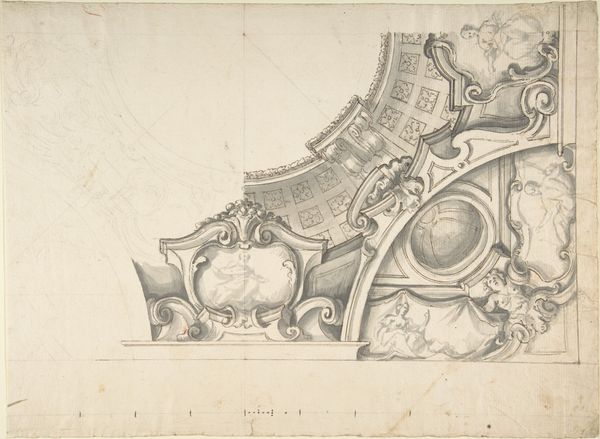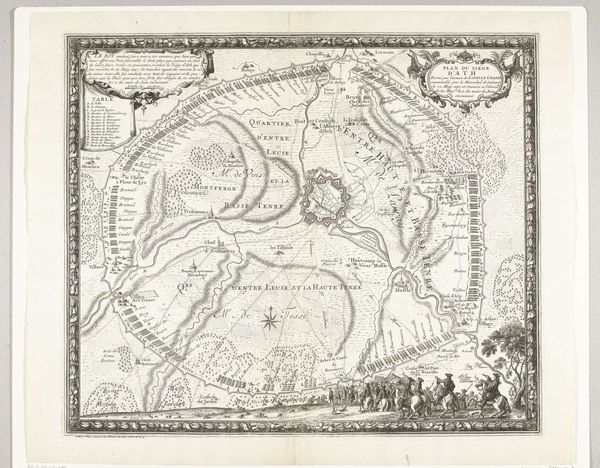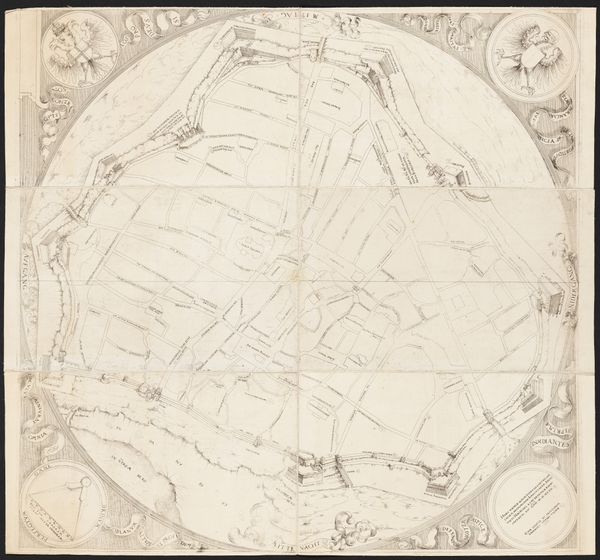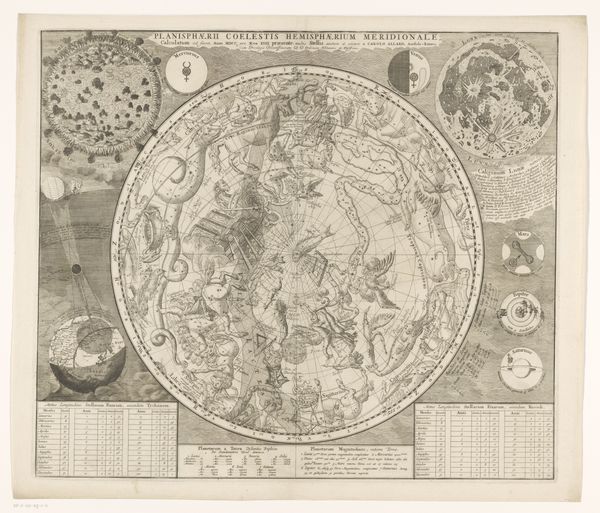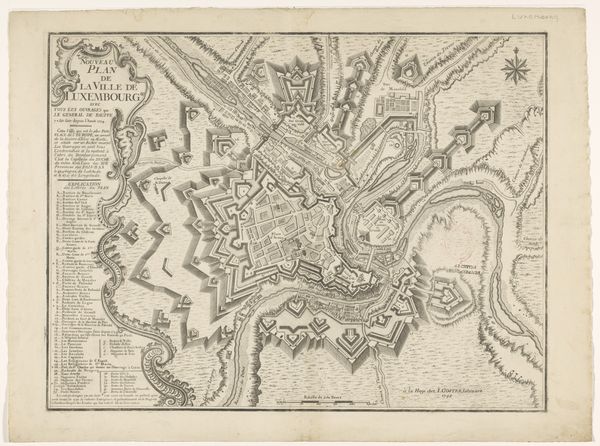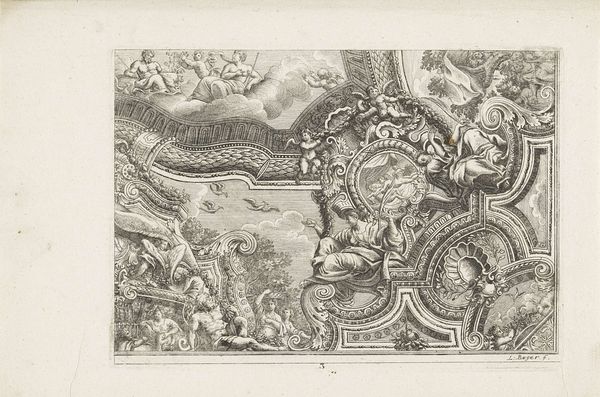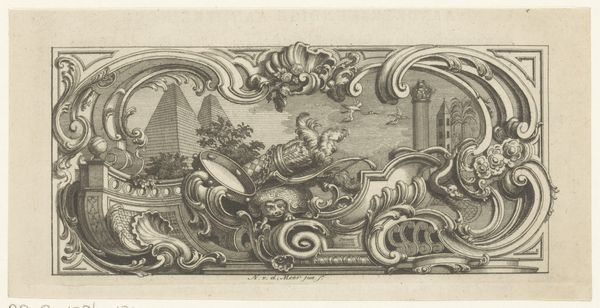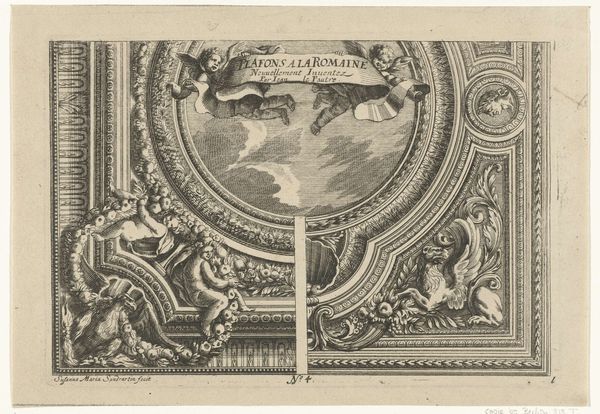
print, engraving
# print
#
landscape
#
geometric
#
cityscape
#
history-painting
#
academic-art
#
engraving
Dimensions: height 1220 mm, width 1270 mm
Copyright: Rijks Museum: Open Domain
Curator: Here we have a piece entitled "Grote kaart van het beleg van Namen, 1695" which translates to "Large map of the siege of Namur, 1695." It was created by Gilliam van der Gouwen and resides here at the Rijksmuseum. The work is an engraving. Editor: It's strikingly precise! It feels cold and detached. It almost feels like an architect's blueprint instead of a dramatic wartime illustration. Curator: What intrigues me is how the means of producing an image like this speaks to its very function. This isn't just a representation of the siege; it's a tool used in planning and executing military strategy. Look at the fine detail of the topography, the precision of the fort's layout. Editor: Precisely, that precision reflects the social dynamics of power at the time, doesn’t it? Mapping technologies such as this were used to claim territories but also establish hierarchies based on knowledge and visibility. What do the representations and deployments tell us about concepts like ownership and legitimacy, then as compared to now? Curator: The engraver's labor, the tools they employed, the networks required to distribute such images – these elements constitute a crucial layer of meaning often overlooked. The act of siege warfare reduced to this. What was for soldiers a muddy, horrific endeavor transforms into geometry on a page. Editor: Exactly, consider Namur as a site contested for its identity, a crucial pawn during Louis XIV's expansionist campaigns. Who got to lay claim over that area? This siege reflects those power struggles of nation and sovereignty that resonate throughout contemporary geopolitical discourse. Think, too, about those in power drawing lines on the land... Curator: Right. Each print demanded paper, ink, the engraver's skilled hand, distribution networks… it's about unearthing that network and the sheer quantity of resources required to render it into an image ready for dissemination. Even as we consume it passively, its materiality begs us to consider its historical context of production. Editor: Definitely. We have this artwork that can unveil not only war strategies but deeper ideological struggles defining eras—wars between religious groups or struggles to assert control over valuable areas for military and financial gain. The memory remains—even as these clashes continue. Curator: So next time you gaze at an engraving like this one, remember the workshop, the craftsman's hand, and the gears of empire churning behind it. Editor: Indeed. Reflect on whose stories are being depicted—and whose erased—so we can understand our complicated tapestry of past, present, and future.
Comments
No comments
Be the first to comment and join the conversation on the ultimate creative platform.
